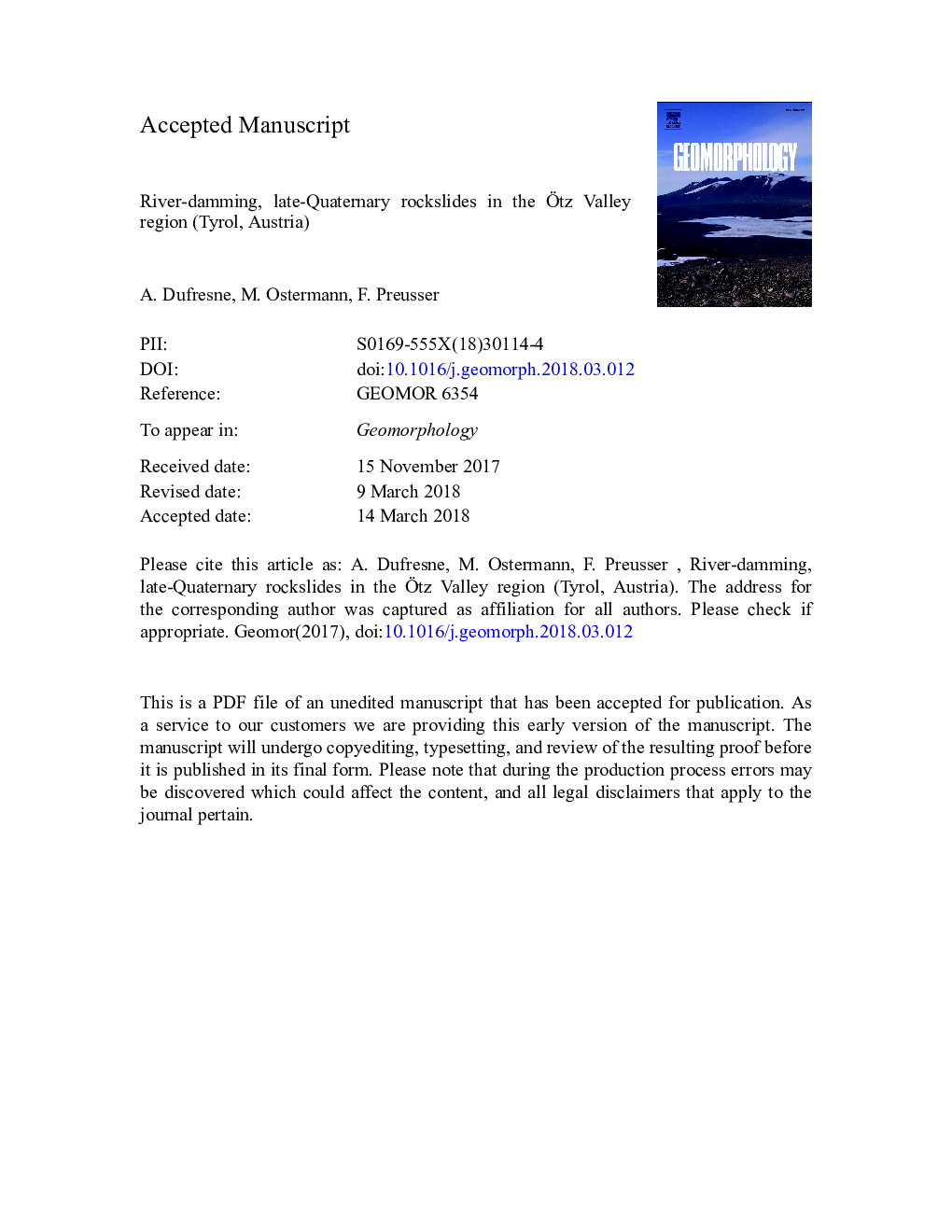| Article ID | Journal | Published Year | Pages | File Type |
|---|---|---|---|---|
| 8908046 | Geomorphology | 2018 | 54 Pages |
Abstract
The Ãtz Valley and adjacent regions in Tyrol (Austria) have been repeatedly affected by large rockslope failures following deglaciation. Six rockslides, each over 107â¯m3 in volume, were emplaced into the Ãtz and Inn valleys, five of which formed persistent rockslide dams. Even though catastrophic rockslope failures are short-lived events (commonly minutes) they can have long-lasting impacts on the landscape. For example, large fans have built in the Ãtz Valley and knickpoints persist at the former dam sites even though the Ãtz River has eroded through the deposits during the past thousands of years; exact age-constraints of rockslide dam failure, however, are still scarce. Empirical, geomorphic stability indices from the literature successfully identified the least and the most stable dams of this group, whereas the rest remain inconclusive with some indices variably placing the dams in the stable, unstable, and uncertain categories. This shows (a) that further index calibrations and (b) better age constraints on dam formation and failure are needed, and (c) that the exact processes of dam failure are not always trivial to pinpoint for ancient (partially) breached dams. This study is a contribution towards better constraining the nature and landscape impact of dam formation following large rockslope failures.
Keywords
Related Topics
Physical Sciences and Engineering
Earth and Planetary Sciences
Earth-Surface Processes
Authors
A. Dufresne, M. Ostermann, F. Preusser,
